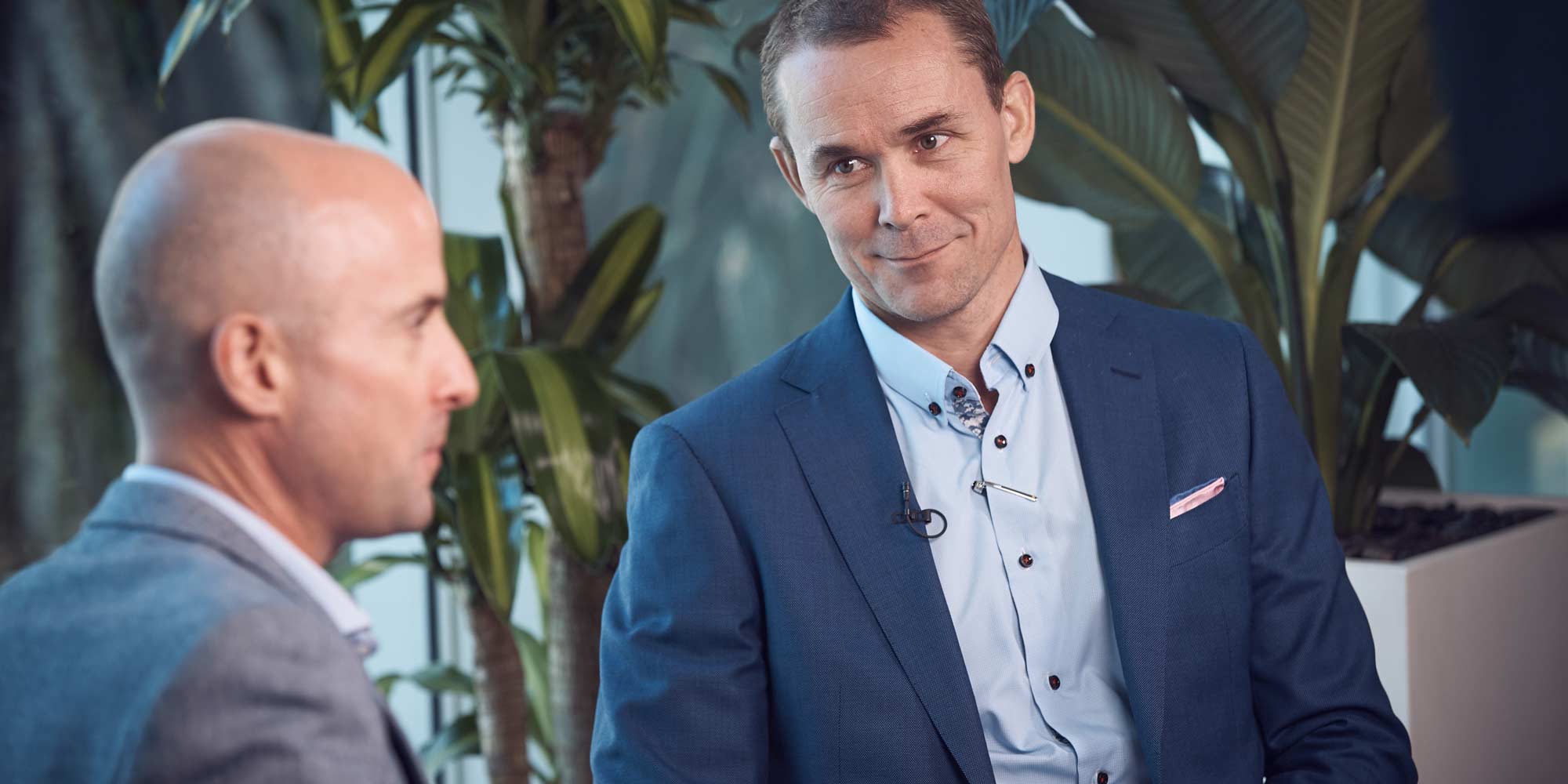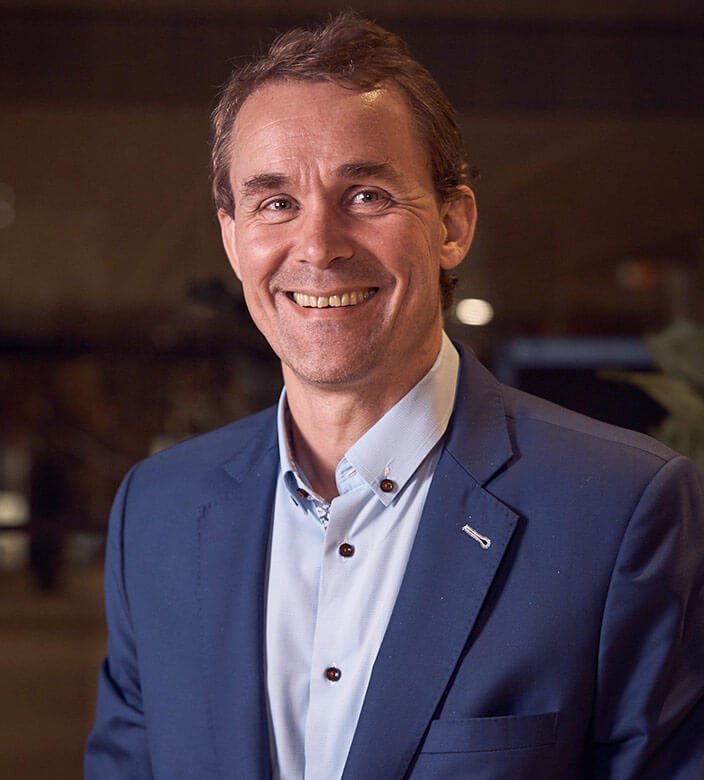Pontus Siren is a Partner at major global innovation consultancy Innosight. He has worked extensively on innovation growth strategies and capabilities in many countries and regularly advises senior managers on these topics.
He speaks with Jim Berry, ADAPT’s CEO and Founder, at Digital Edge about what he sees as the three key areas of digital transformation and how they can be used systematically to drive organisations and people forward.
Jim Berry:
Thanks for joining us at Digital Edge. You’re here today to speak on building new operating models and the art of digital transformation. I understand that in your presentation you’re going to be talking around a three-point resource allocation process for digital leaders to across the areas of digital execution and transformation. Can you explore that a bit with me?
Pontus Siren:
Sure. One of the biggest challenges is that companies don’t really have a common language around the strategy and implementation of digital. It’s actually a highly complex space, so we’ve tried to simplify it a little bit. We basically talk about areas 1, 2 and 3.
Area 1 is laying the foundations of digital. It’s essentially about operational efficiency and the fundamentals of operating digitally. Area 2 is about customer interfaces. How do you digitise all those interfaces with your customers? The banks have done a great job with this over the last 10 to 15 years. And the third area is about building new digital business models, which is a fundamentally new way of operating your business in a digital world. And companies need to determine what needs to be done in areas 1, 2 and 3.
Jim Berry:
Is there a way then that they can systematically map opportunities across these areas?
Pontus Siren:
To systematically map the opportunities you need to understand the threats and opportunities. If your core business model is fundamentally sound and you’re not facing any disruptive threats, it makes a lot of sense to invest in areas 1 and 2. In other words, you drive operational efficiencies in area 1, and you digitise your customer interfaces. And again, the banks as a simple example, have done a great job with this. They’ve digitised extensively their core operations, and they’ve extensively also digitised their customer interface. But they’ve done relatively little in business model innovation, and one might argue that they haven’t needed to. Other businesses like retail have had to deal with transformations. And not only had they had to drive efficiencies in the core, but they’ve also had to develop new business models. Some have been successful, many have not.
Jim Berry:
And we’re also saying once you get to that third step, that’s where you’re starting to talk around ecosystems and partners.
Pontus Siren:
That’s right. Platforms and partnerships. Significantly different ways of doing the business. And companies need to be crystal clear about if they working primarily in areas 1 and 2 or whether they actually face a more disruptive challenge when they have to innovate their business model. Without that determination, it’s actually very difficult to allocate resources intelligently.

Jim Berry:
So we’ve had MIT speaking at our events for the last two or three years around platform strategy, digital ecosystem, statistics, even just today talking about how much business there will be in the future. Trillions. They’re going through a relatively few numbers of platform ecosystems and the threats to the rest of commerce. It’s obviously a very important area for companies to get to step 3. That involves quite a long horizon planning. When you’re dealing with executives, what do you find since change is so rapid? Is there a difficulty with looking at a five-year horizon?
Pontus Siren:
Many of these changes are quite predictable. We asked the question, can competitors solve the same customer problem differently in the future? How would you solve the same problem differently? In retail, they solve it quite differently, because you’ve got home delivery. And you don’t need as much brick and mortar as you did historically. But asking that question gets you to that answer saying, what would you do differently? Would you change the delivery model? Would you change the pricing model? Would you change your partnering model, etc?
You have to break it into pieces. You have to start to ask the questions about what parts of the business model need to change. We can see how technology will affect these industries because they’re predictable trajectories in terms of connectivity and data analytics, and we can see how they will improve.
But the fundamental question they should be asking is, how will the customer problem – or as we call it, the customer job – gets done.”
How will it be solved differently in the future? And what do we need to do to get ready for that future?
Jim Berry:
Now, the theme for the last couple of years, and certainly today, has been it’s not so much technology or even concept, it’s very much about struggling with the impact on people. Taking people on the journey, managing up and just as importantly, managing down, and whether your staff on one side are frustrated because change isn’t coming quickly enough. Or they’re overwhelmed because they don’t want a change from trying to find that middle ground to enable a sustained change. Have you got advice on how to adopt new mindsets and culture and this people piece that seems to be quite prevalent?
Pontus Siren:
That’s a very, very important question.
In some ways, leaders have to become better storytellers. They have to tell a narrative that people can understand.”
And of course, if one then double-clicks on that, what you have to do is conduct a rigorous analysis of the situation, the threats and opportunities, some of the things we just talked about. Then you have to drive alignment in the leadership team, so they can tell a common narrative to the whole organisation.
And then you have to enable action. You’ve got to repeat that as you refine the model. So it’s about analysis, hugely important. Then alignment, and then action. So you actually do something. And consistently throughout that journey, leaders have to be telling the story. Why are we doing this? Where are we going? And in some ways, you have to simplify it. Often we get lost in the complexities, we have to simplify. We have to set the direction, set the objectives, and constantly explain why are we doing this. Because it is tough to test and learn all those good things. But without that narrative, without that goal, it’s very difficult for people to be on the same page and to be on that journey.
 WATCH
06:23
WATCH
06:23






























